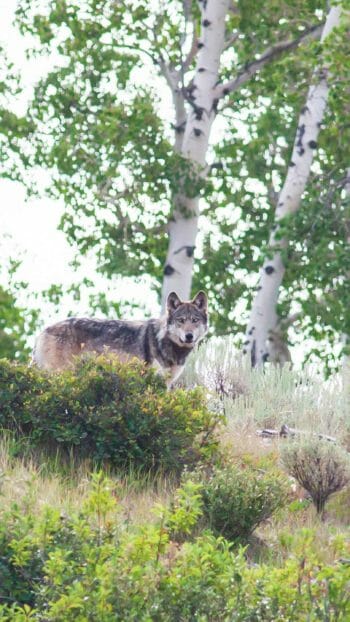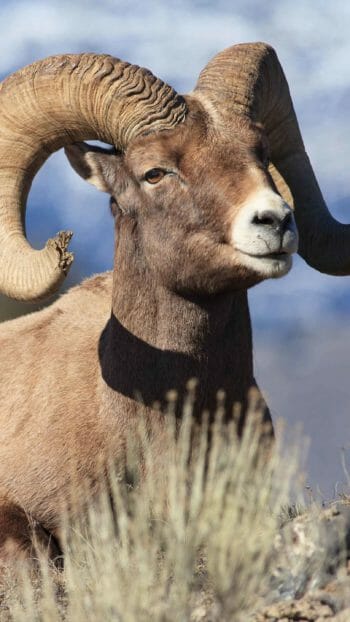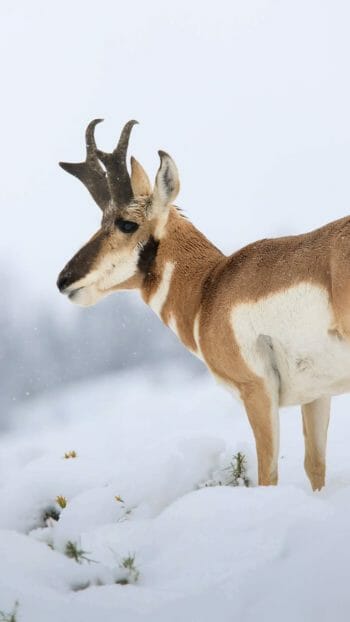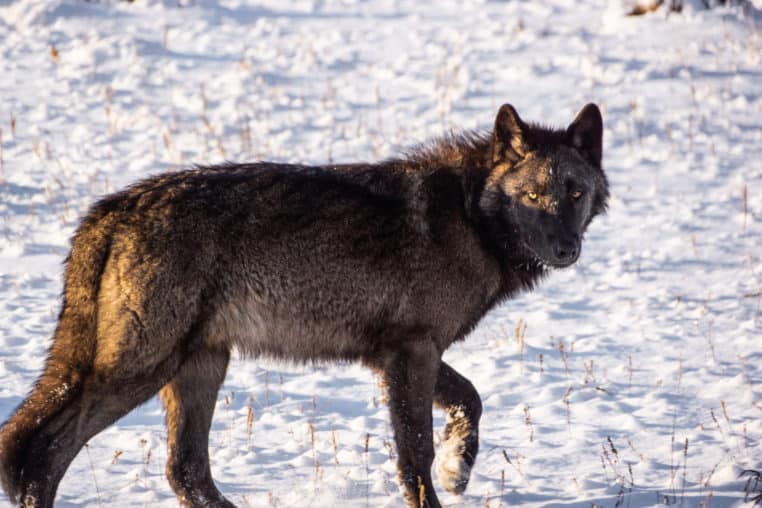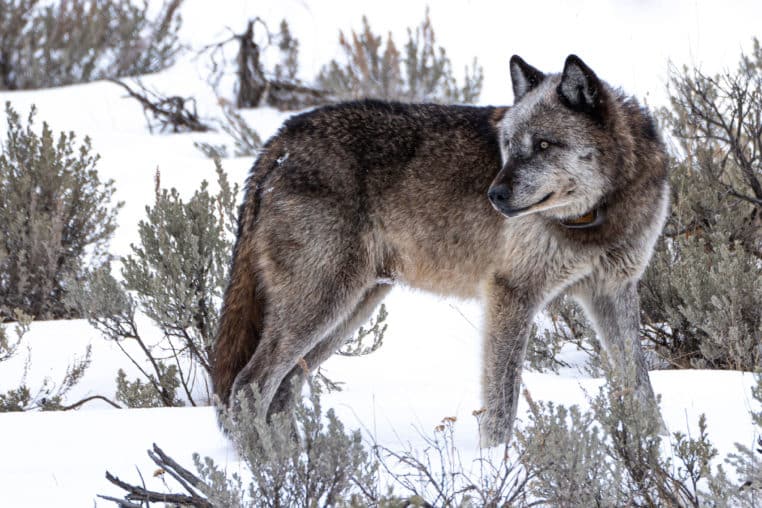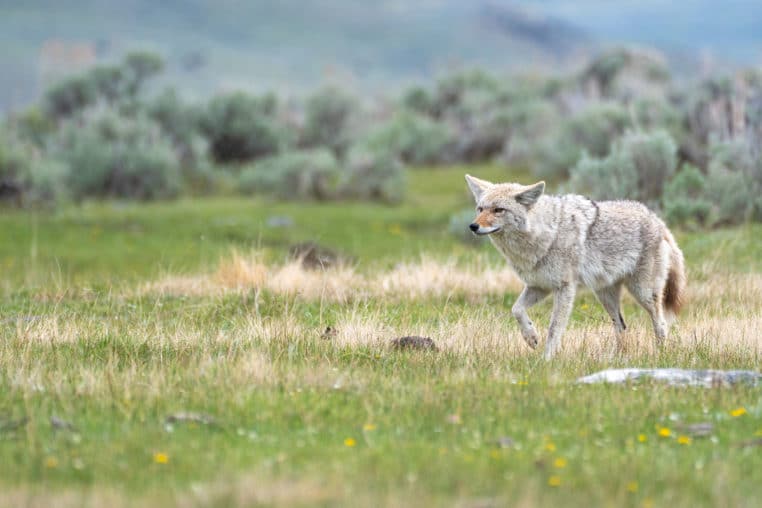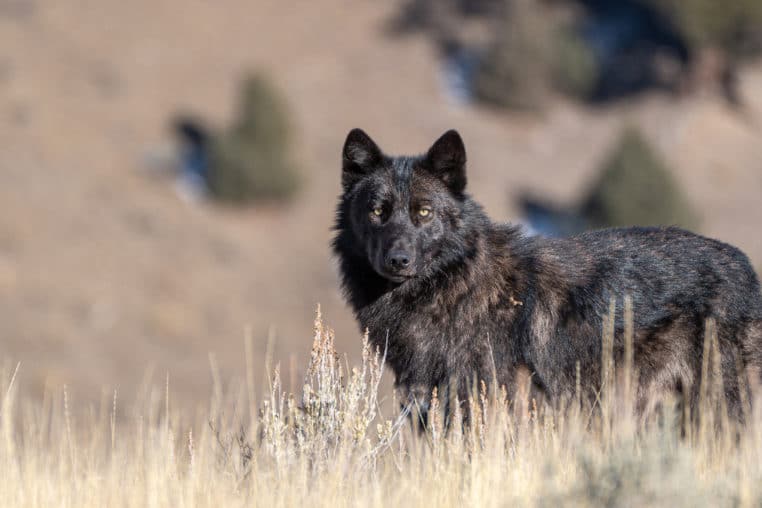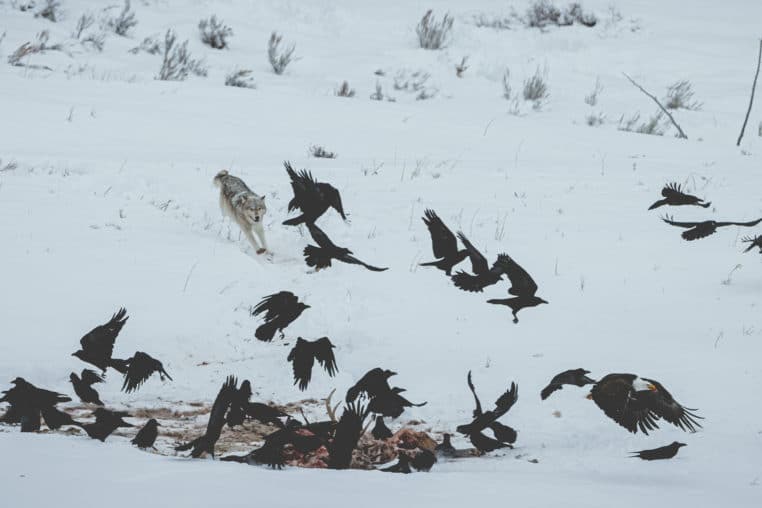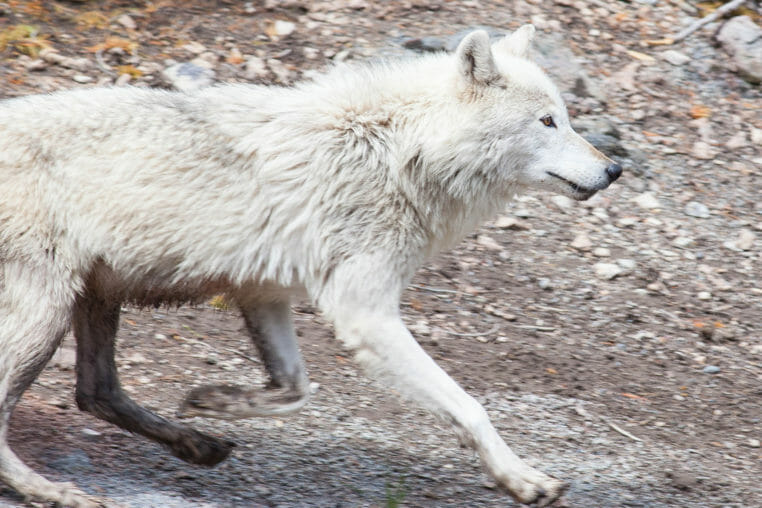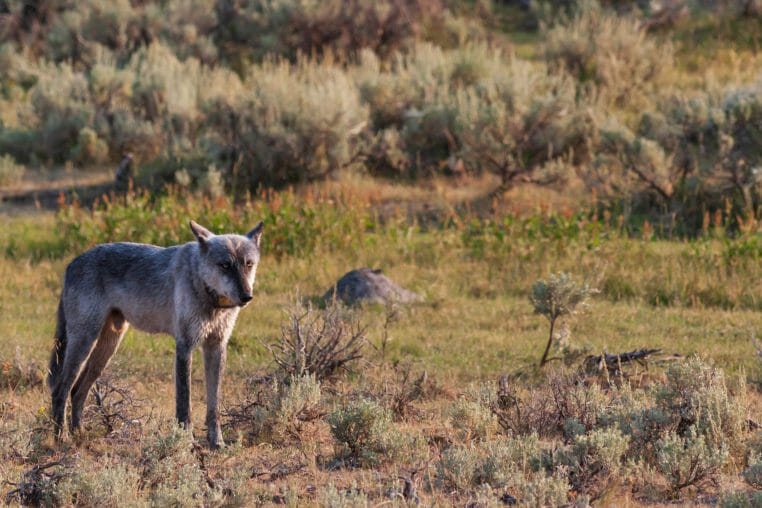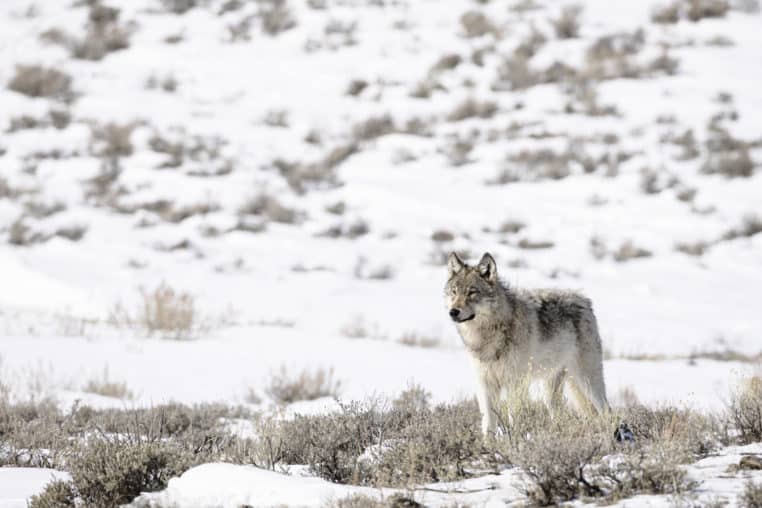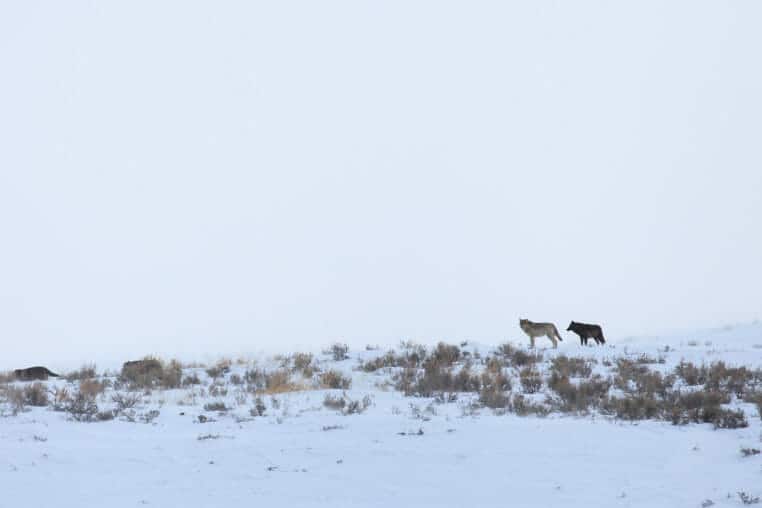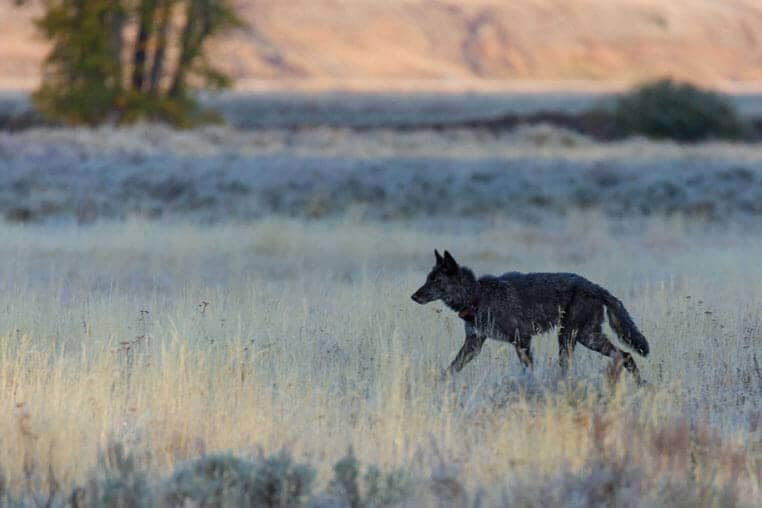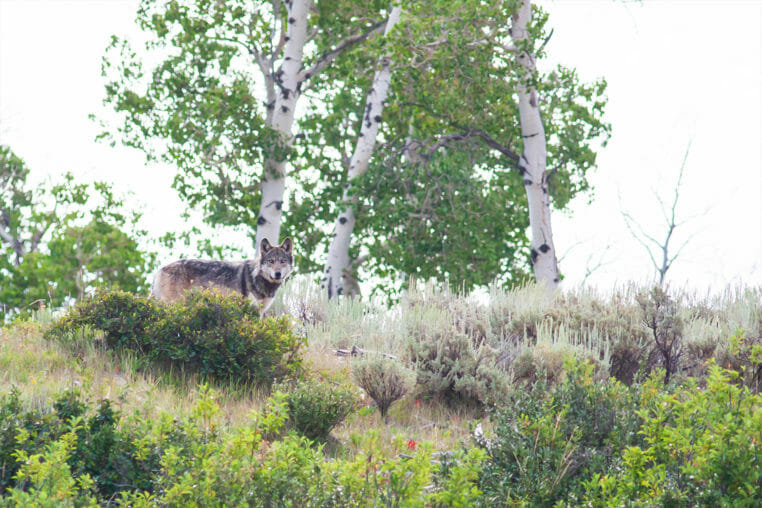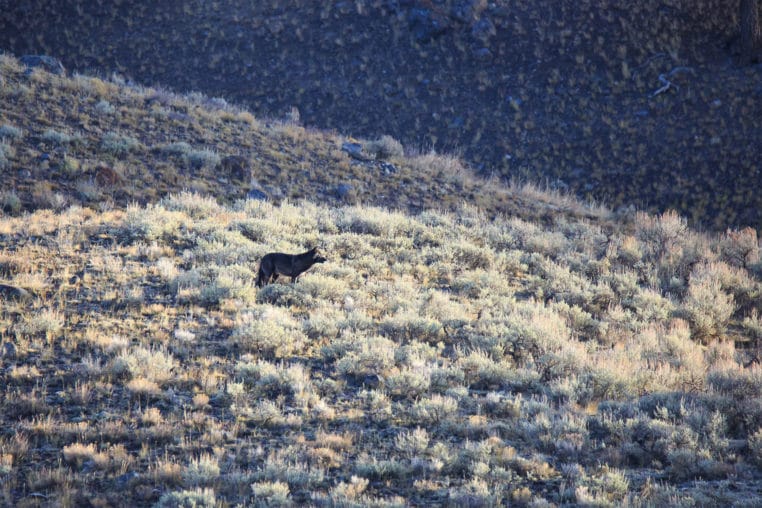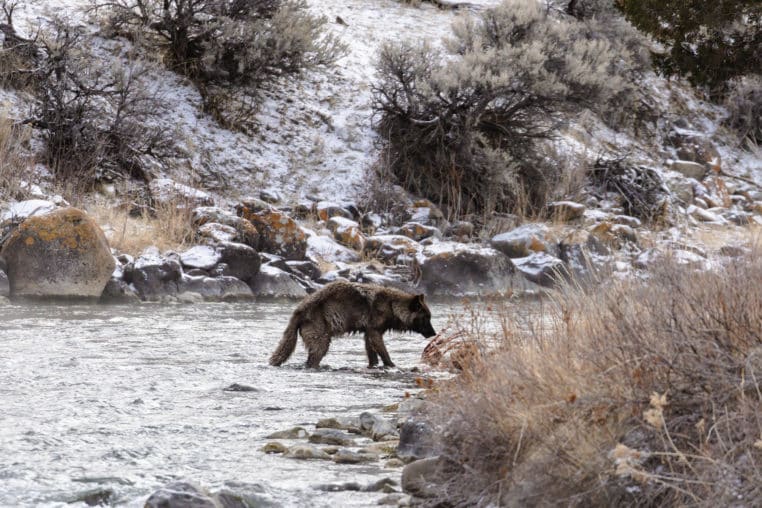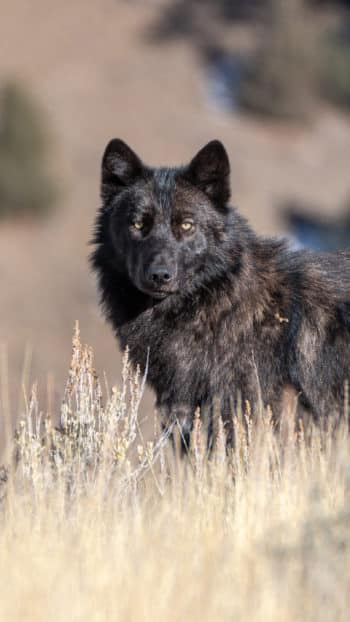
Canis lupus
Yellowstone National Park is one of the best places in the world to witness wild wolves in their natural habitat. For many visitors, seeing a wolf in Yellowstone is a bucket-list experience, one that symbolizes both the park’s wild character and its role as a leader in conservation. The story of the wolf’s return to Yellowstone is one of the most famous wildlife success stories in North America. From near eradication to a thriving, visible population today, wolves have transformed not only the park’s ecosystems but also the way people understand predator-prey relationships.
Wildlife Viewing
- Yellowstone
Book Online
Watch For Wildlife On These Tours
About
Extirpation and Return
By the early 20th century, wolves were eradicated from Yellowstone through government predator control programs, hunting, and ranching conflicts. Wolves were feared as threats to livestock and eliminated from nearly all of the lower 48 states. Without wolves, elk populations in Yellowstone grew unchecked, leading to overgrazing of aspen, willow, and cottonwood. This ecological imbalance caused ripple effects throughout the ecosystem, impacting everything from birds to beavers.
In 1995 and 1996, the National Park Service and U.S. Fish and Wildlife Service reintroduced gray wolves to Yellowstone, bringing 31 wolves from Canada to the park. The results were dramatic: elk numbers stabilized, vegetation rebounded, beavers and songbirds returned, and biodiversity improved. This “trophic cascade” highlighted the wolf’s role as a keystone species and remains one of the most studied examples of ecosystem restoration in the world.
Diet and Hunting
Wolves are obligate carnivores, relying almost entirely on meat. Their primary prey in Yellowstone is elk, but they also hunt deer, moose, bison, and smaller mammals. Hunting such large and dangerous prey requires strategy and teamwork. Wolves live and hunt in packs, coordinating through vocalizations, body language, and instinct. Even with these advantages, hunts are successful only about 20% of the time, making each kill a hard-won effort for survival.
Pack Dynamics
Contrary to popular belief, wolf packs are not dominated by “alpha” and “beta” wolves in strict hierarchies. Modern science shows that packs are essentially family groups, led by a breeding pair—the parents—who raise their offspring together. Younger wolves may remain with the family for several years, helping to care for pups, before dispersing to form their own packs. In Yellowstone, where wolf density is relatively high, some packs may include multiple breeding pairs, creating fascinating dynamics for researchers and wildlife watchers alike.
Breeding and Pups
Wolves mate in late winter, with litters of 4–6 pups typically born in April or May after a short 63-day gestation. Pups are born blind and dependent, cared for not only by their parents but also by older siblings who bring food and protect them. As they grow, young wolves learn hunting and social behaviors from their pack, skills essential for survival in the harsh landscapes of Yellowstone.
Best Places to See Wolves in Yellowstone
Today, Yellowstone is one of the premier destinations in the world for wolf watching. Wolves roam across the park and into Grand Teton, but the Lamar Valley in the northeastern corner of Yellowstone is the most reliable location for sightings. Known as “America’s Serengeti,” Lamar Valley offers vast, open landscapes where wolves, bison, elk, and bears are often visible. Early mornings and evenings are the best times to look for wolves, when they are most active and easier to spot with binoculars or spotting scopes.
Winter provides some of the best wolf viewing in Yellowstone, as the snow makes them highly visible against the white landscape. Guided wildlife tours often focus on wolf watching during this season, providing visitors with the expertise and high-end optics needed to maximize their chances of seeing these elusive predators.
FAQs
How many wolves live in Yellowstone National Park?
Yellowstone is home to an estimated 500–600 wolves across the Greater Yellowstone Ecosystem, with about 8–10 packs living within the park itself. Numbers fluctuate year to year depending on prey availability, pack dynamics, and natural mortality.
Why were wolves reintroduced to Yellowstone?
Wolves were reintroduced to Yellowstone in 1995 and 1996 to restore balance to the ecosystem after they had been eradicated by the early 20th century. Without wolves, elk populations grew too large and overgrazed important vegetation. The return of wolves triggered a trophic cascade, helping vegetation, beavers, birds, and other species rebound.
What do wolves eat in Yellowstone?
Wolves are carnivores that primarily prey on elk, but they also hunt deer, bison, moose, and smaller mammals. They are opportunistic feeders and will scavenge when possible. Hunting large prey requires teamwork, and packs coordinate their efforts to increase their success.
When is the best time to see wolves in Yellowstone?
The best wolf watching in Yellowstone is during early morning and evening hours, when wolves are most active. Winter is considered the top season for sightings because the wolves stand out clearly against the snow and spend more time in valleys where prey is abundant.
Where is the best place to see wolves in Yellowstone?
The Lamar Valley is widely regarded as the best place to see wolves in Yellowstone, thanks to its open terrain and high wolf activity. Other good locations include the Hayden Valley and the Northern Range. Guided wildlife tours with spotting scopes and expert naturalists greatly increase the chances of a successful sighting.
Further Reading
Viewing Lamar Valley Wolves on Safari
Apr 16, 2025
While wolves can be seen year-round, each season offers a unique experience—lush meadows and pup sightings in the summer, or dramatic snow-covered hunts in the winter. Whether you’re a first-time visitor or a seasoned wildlife enthusiast, here’s everything you need to know about viewing wolves on safari in Yellowstone.
Wolves in Yellowstone
May 1, 2025
Few wildlife experiences rival the thrill of seeing wild wolves in Yellowstone National Park. Once absent from this vast wilderness, wolves have made a remarkable return, becoming one of the park’s most iconic and ecologically influential species.

